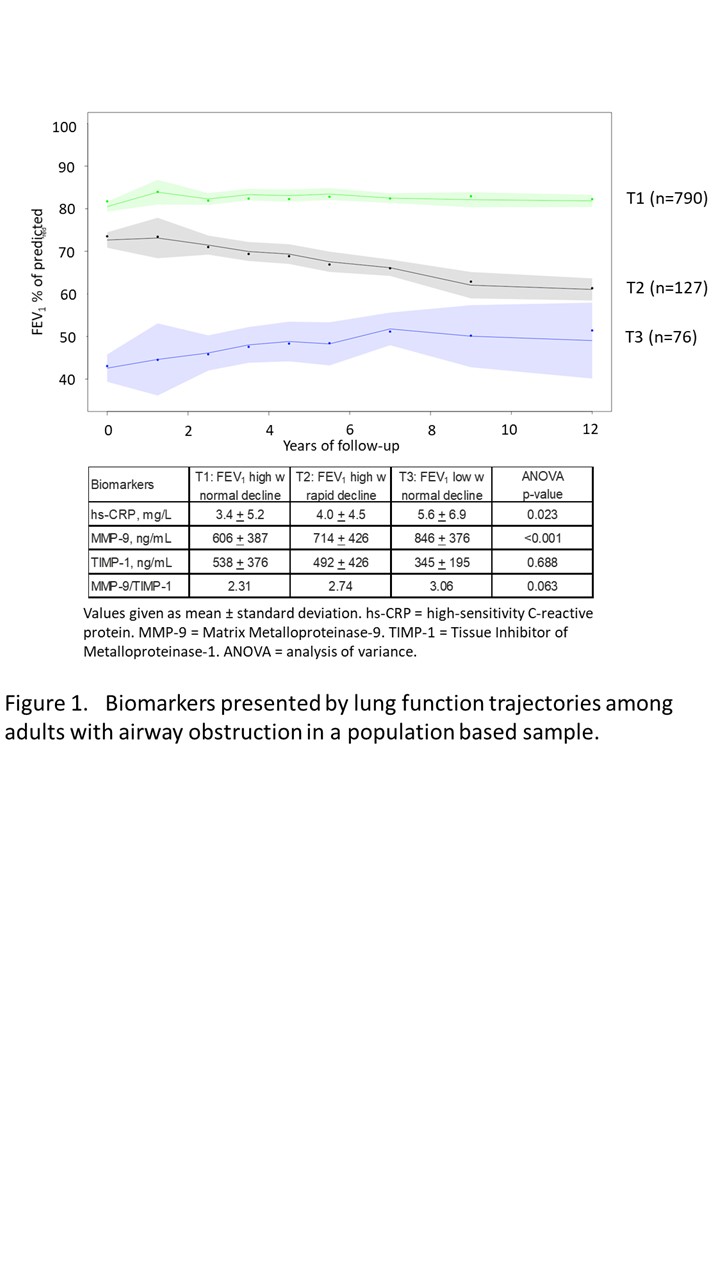Abstract
Background: There is a lack of data on lung function trajectories in COPD and underlying disease mechanisms are poorly understood.
Aim: To compare biomarkers across different lung function trajectories among individuals with airway obstruction sampled from the general population.
Methods: Subjects were recruited from four previous population-based cohorts in 2002-04 and have since been invited to annual examinations. In 2005, blood samples were collected. Data-driven Latent Class Mixed Models were used to identify lung function trajectories in data from >10 years of follow-up (11,691 data points for FEV1). MMP-9, TIMP-1 and hs-CRP were measured in the 2005 blood samples and results integrated with trajectories.
Results: Three trajectories T1-T3 were identified; mean age 65, 58 and 71y, and proportion of ever-smokers 72%, 100% and 78%, respectively. Mean hs-CRP and MMP-9 differed across trajectories, with trajectory T3 (FEV1 low with normal decline) exhibiting the highest values (Figure 1). The MMP-9/TIMP-1 quota increased by trajectory, though not significantly so (p=0.063).
Conclusion: Lung function trajectories in adults with airway obstruction have different biomarker profiles and might thus represent different COPD endotypes.
